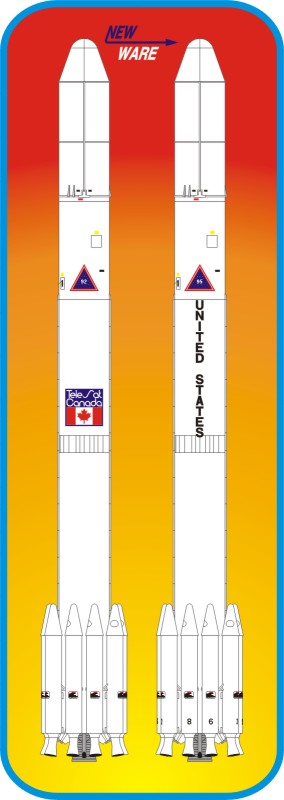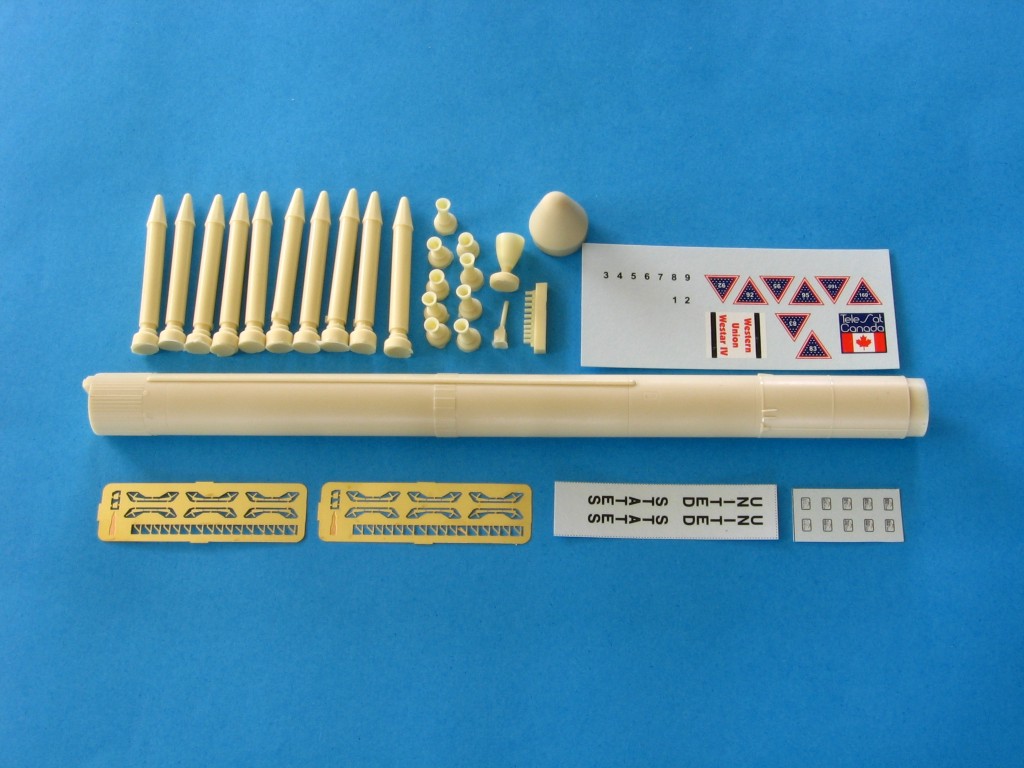 NW057 Delta 1900
NW057 Delta 1900 NW057 Delta 1900
NW057 Delta 1900

The Thor was originally designed as an Intermediate Ballistic Range Missile (IRBM) in December 1954 and first flew in 1957. In 1959 Douglas created the Thor Delta as a civilian launch vehicle for NASA. It was termed Delta since it was the fourth version of the Thor rocket. The Thor and Delta series of rockets became the workhorse of the American space program and launched more satellites than any other rocket family.
The original Delta was capable of placing 100 pounds into geo-stationary orbit. Continuous improvements in each stage and the addition of strap-on solid boosters increased the capacity of Deltas greatly. The Delta series progressed through the alphabet s the capacity increased ten times so that the Delta M-6 (NW 054) could launch 1000 pounds into geo-stationary orbit.
As the number of Deltas increased McDonald-Douglas instituted
a four digit designator system for the Deltas. The first digit
identified the type of first stage, the second digit the number
of strap-on boosters, and the last two digits the payload.
The Delta 1900 series was introduced in 1972 and all of its eight
flights were successful. The first stage was based on the
Extended Long Tank Thor with an improved Aerojet AJ-10 rocket
engine. As the second digit demonstrates it had nine Castor solid
rocket boosters surrounding the first stage. It had an eight foot
in diameter second stage and payload fairing.
New Ware selected the first two launchers as the markings for its model of the Delta 1900. Delta 1913 carried Explorer 47, which was part of the Interplanetary Monitoring Platform (IMP) series. It was launched on Sept. 23, 1972 and investigated the earth’s magnetosphere and interplanetary plasma.
Delta 1914, launched on Nov. 10, 1972 carried Anik I, Canada’s first commercial telecommunications satellite. Anik I operated for nearly 10 years and serviced almost all of Canada, including its most northern sections, carrying 12 color television channels simultaneously.

Photo of kit parts